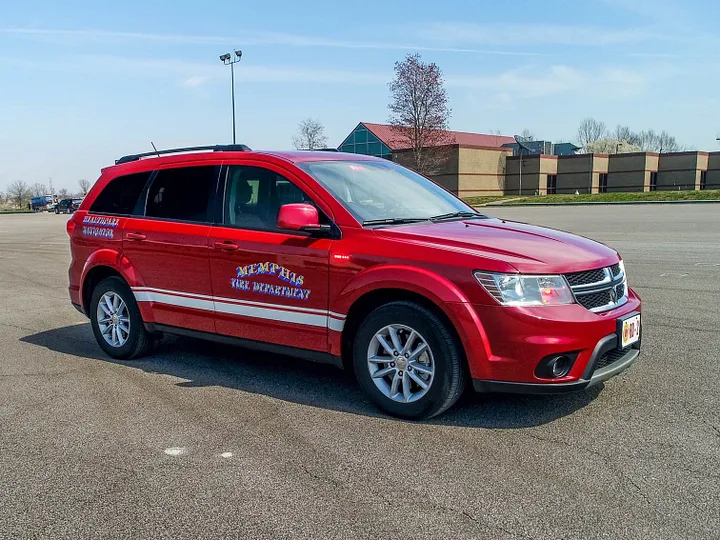Memphis, Tennessee, USA
From a Windowless Conference Room to a Mayoral Platform: Memphis Builds Momentum with Data.
Project Type:
Community Engagement, Health & Wellness, High-Performing Government, Public Safety, Technology
2019 Silver Certification
This narrative was written for Memphis’ 2019 Silver What Works Cities Certification. Some content may be outdated. For the most current information, please visit memphistn.gov.
At a Glance
The City’s Department of Animal Services used data to track progress toward its goal of ensuring more shelter animals find homes, now nearly 94% of animals are adopted, up from just 46% in 2014.
Dispatched a paramedic and a health doctor in a cherry-red SUV to evaluate callers, bringing the screening exam to the patient to make travel easier through the Rapid Assessment Decision and Redirection (RADAR) data program.
Took a holistic approach to data using video analytics, installing cameras around the city to monitor trash collection, potholes, and a wide range of factors impacting city life.
The Beginning of Data
When it comes to transforming your city into a 21st-century data tech model, is it possible to be both incredibly humble and supremely advanced at the same time?
Memphis proves that it is!
The City is rewriting the rules for what it means to be a smart city on a daily basis. But while Memphis is leading the way, you will never hear a public official — from the mayor down to line-level data analysts — claim that their work is finished.
Momentum Gets Going
The City’s approach to tech and data began in 2011 when Memphis was chosen to be one of the first five cities to receive a Bloomberg Philanthropies Innovation Team (i-team) grant.
Then-Innovation Director Doug McGowen began leading a small group of creative thinkers to rethink and revamp major policies in areas of gun violence and neighborhood economic vitality. After the initial success of the City’s i-team work, McGowen realized something most all innovation leaders encounter: Individual programs may see dramatic improvements, but the underlying systems and operations of government will not sustain success without a solid performance management system in place. McGowen holed up in a windowless conference room in City Hall while he talked with all city departments to map out a rudimentary performance management program.
Tackling the Basics
Memphis’s Good Government Dashboard may have its roots in the Innovation Office, but leaders knew that the new data system needed to prioritize the basics of service delivery before it could take on glitzier projects, such as mobile apps.
The seriousness of data and performance becomes clear the minute you step into one of the monthly dashboard meetings. Directors from across the City’s departments convene to analyze service delivery numbers displayed on a wide screen for all to see. What’s evident at these meetings is the meticulous attention to the fundamentals of performance.
For example, in 2016 police recruitment had not been keeping pace with attrition, and staffing was at critically low levels. The City revamped its public safety recruitment and retention practices, and Human Resources now reports monthly on officer staffing, attrition, and recruitment. Another instance of data illuminating a service gap has been in the City’s Department of Animal Services, which has been tracking progress toward its goal of ensuring more shelter animals find homes. Now nearly 94% of animals are adopted, up from just 46% in 2014.

Streamlining Emergency Medical Services
Memphis’ focus on data has created a culture in which other agencies have the support to experiment and be creative with how they implement services. Take emergency medical services (EMS), for example. Housed in the Fire Department, they were awash with data and resources but were having a difficult time figuring out if they were effectively dispatching their ambulances. “We would just keep getting more money from the City Council to ensure we were responding quickly to calls, without questioning if we were providing the most appropriate services,” said Fire Chief Gina Sweat.
Sweat dug into the call data and conducted a full review of services, leading to a startling conclusion: Up to 20% of EMS calls did not require an ambulance. Something had to change. Fire Department Lieutenant Kevin Spratlin started researching how Memphis could connect residents to the right services, such as a primary care physician or a healthcare professional, instead of dispatching an ambulance. “These are not people abusing 911 — they just don’t know where to turn” shared Lieutenant Spratlin.

The City stood up a pilot of what is now its Rapid Assessment Decision and Redirection (RADAR) program, which dispatches a paramedic and a health doctor in a cherry-red SUV to evaluate the caller, bringing the screening exam to the patient. Interim results of that pilot showed that, out of 400 runs, 66% did not require an ambulance.
The program, which is preparing to fully launch this summer, will ensure that all callers to 911 receive the right level of care, promoting better long-term health outcomes while saving money for both residents and the City. In fact, insurance companies are proactively calling Spratlin to see what the cost-saving secret is. “These guys used to never return my call, and now they want to talk to me!” he exclaims.
Beyond Sensors to Service
Maybe one of the greatest innovations is happening in the Information Services department. These are often agencies that serve a back-office function, such as ensuring that computers are in working order. Not at all content with the status quo, Mike Rodriguez — an ex-FedEx tech executive turned City Chief Information Officer — is charting a new path by leading the City’s first open data policy with the ultimate goal being to visualize the entire city. Rodriguez disparages the conventional wisdom that cities should embrace the Internet of Things, with sensors everywhere, and instead is creating “situational awareness,” or clarity of all the factors impacting an event. To do this, the City is installing cameras that will soon provide video analytics for most everything from trash collection to potholes.
Rodriguez explains his approach: “Everyone wants little sensors on everything. For what? Put a sensor on a garbage can, and it may tell you when it’s full, but with video I can tell you a hundred other factors about the trash, the neighborhood, and the surrounding environment — and for less money.” But as with every other official in Memphis, Rodriguez stresses that these efforts are nascent, and there is far more to learn.
As Memphis rewrites the rules, it’s reminding us that momentum starts where you make it — like with the basics, or in a windowless conference room.
Read more about Memphis’s data journey here.